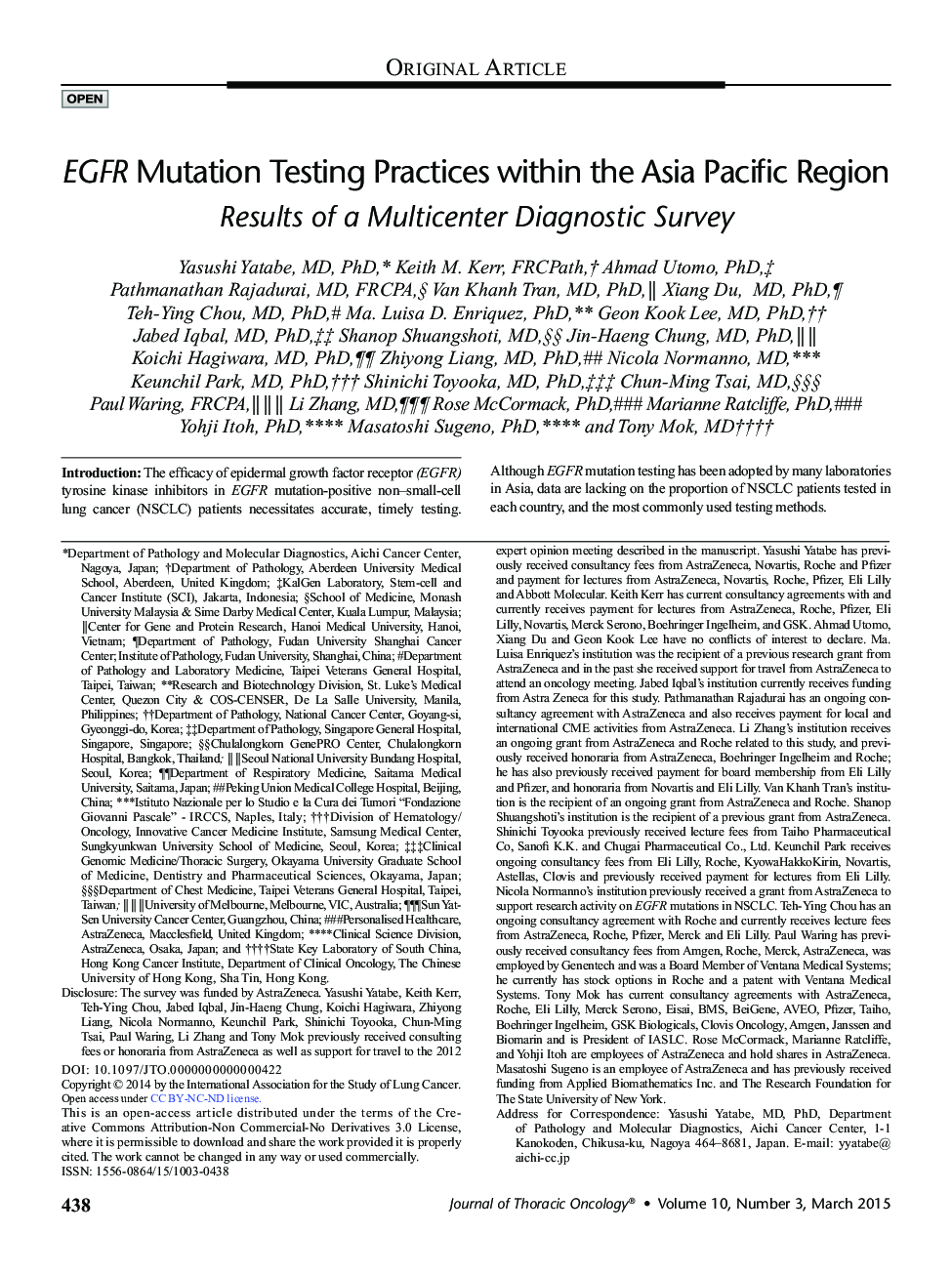| Article ID | Journal | Published Year | Pages | File Type |
|---|---|---|---|---|
| 6193111 | Journal of Thoracic Oncology | 2015 | 8 Pages |
IntroductionThe efficacy of epidermal growth factor receptor (EGFR) tyrosine kinase inhibitors in EGFR mutation-positive non-small-cell lung cancer (NSCLC) patients necessitates accurate, timely testing. Although EGFR mutation testing has been adopted by many laboratories in Asia, data are lacking on the proportion of NSCLC patients tested in each country, and the most commonly used testing methods.MethodsA retrospective survey of records from NSCLC patients tested for EGFR mutations during 2011 was conducted in 11 Asian Pacific countries at 40 sites that routinely performed EGFR mutation testing during that period. Patient records were used to complete an online questionnaire at each site.ResultsOf the 22,193 NSCLC patient records surveyed, 31.8% (95% confidence interval: 31.2%-32.5%) were tested for EGFR mutations. The rate of EGFR mutation positivity was 39.6% among the 10,687 cases tested. The majority of samples were biopsy and/or cytology samples (71.4%). DNA sequencing was the most commonly used testing method accounting for 40% and 32.5% of tissue and cytology samples, respectively. A pathology report was available only to 60.0% of the sites, and 47.5% were not members of a Quality Assurance Scheme.ConclusionsIn 2011, EGFR mutation testing practices varied widely across Asia. These data provide a reference platform from which to improve the molecular diagnosis of NSCLC, and EGFR mutation testing in particular, in Asia.
